Grow Cilantro Indoors? Absolutely! Imagine having fresh, vibrant cilantro readily available, no matter the season, right in your kitchen. Forget those sad, wilted bunches from the grocery store – with a few simple tricks, you can cultivate your own thriving cilantro patch indoors.
Cilantro, also known as coriander leaves, has a rich history, dating back to ancient Egypt, where it was used for medicinal and culinary purposes. Its bright, citrusy flavor has made it a staple in cuisines worldwide, from Mexican salsas to Southeast Asian curries. But let’s face it, buying cilantro can be frustrating. It often goes bad quickly, and you never seem to have enough when you need it most. That’s where the magic of growing your own comes in!
I’m going to share some easy-to-follow DIY tricks and hacks that will empower you to grow cilantro indoors successfully. Whether you’re a seasoned gardener or a complete beginner, these tips will help you create the perfect environment for your cilantro to flourish. Think of the endless possibilities: fresh guacamole on demand, flavorful garnishes for your favorite dishes, and the satisfaction of nurturing your own little herb garden. So, let’s ditch the grocery store cilantro and embark on this exciting indoor gardening adventure together!
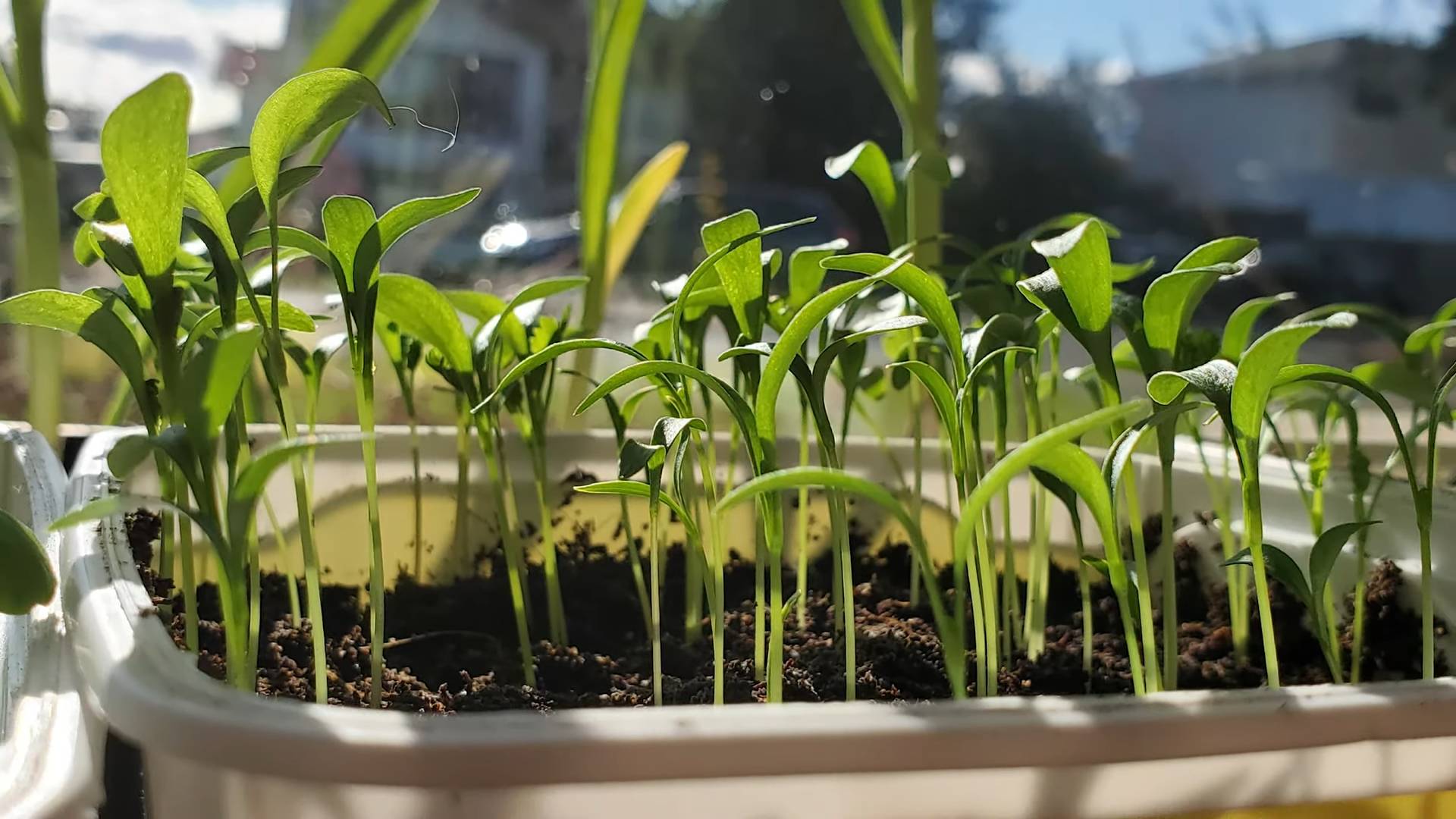
Growing Cilantro Indoors: A Beginner’s Guide
Hey there, fellow plant enthusiasts! Ever crave fresh cilantro in the middle of winter, or just want to have it readily available for your favorite recipes? Well, you’re in luck! Growing cilantro indoors is totally achievable, and I’m here to guide you through the process. It’s easier than you might think, and the reward of having fresh herbs at your fingertips is totally worth it. Let’s get started!
Choosing the Right Cilantro Variety
Not all cilantro is created equal, especially when it comes to indoor growing. Some varieties are more bolt-resistant (meaning they’re less likely to go to seed quickly), which is crucial for indoor success.
* Slow-Bolt Varieties: Look for varieties like ‘Slow Bolt’, ‘Santo’, or ‘Leisure’. These are specifically bred to resist bolting, giving you a longer harvest period.
* Consider Dwarf Varieties: If space is limited, dwarf varieties can be a great option. They stay smaller and more compact, making them ideal for indoor containers.
Gathering Your Supplies
Before we dive into the planting process, let’s make sure you have everything you need. Trust me, having all your supplies ready beforehand will make the whole experience much smoother.
* Seeds: Choose your preferred cilantro variety. You can find cilantro seeds at most garden centers or online.
* Potting Mix: Use a high-quality potting mix that’s well-draining. Avoid using garden soil, as it can become compacted in containers. I personally like mixes that contain perlite or vermiculite for added drainage.
* Container: Select a pot that’s at least 6 inches deep and wide. Cilantro has a taproot, so it needs enough space to grow. Make sure the pot has drainage holes to prevent waterlogging.
* Grow Lights (Optional but Recommended): While cilantro can grow indoors with natural light, grow lights can significantly improve its growth, especially during the darker months.
* Watering Can or Spray Bottle: For gentle watering.
* Small Shovel or Trowel: For planting the seeds.
Planting Your Cilantro Seeds
Okay, now for the fun part – planting those seeds! This is where the magic begins.
1. Prepare the Pot: Fill your chosen container with the potting mix, leaving about an inch of space at the top. Gently pat down the soil to create a firm surface.
2. Sow the Seeds: Cilantro seeds are relatively large, so they’re easy to handle. Sprinkle the seeds evenly over the surface of the soil. You can sow them quite densely, as you can always thin them out later.
3. Cover the Seeds: Lightly cover the seeds with a thin layer of potting mix, about ¼ inch deep.
4. Water Gently: Use a watering can or spray bottle to gently moisten the soil. Be careful not to dislodge the seeds. The soil should be damp but not soggy.
5. Provide Light: Place the pot in a location that receives at least 6 hours of sunlight per day. If you’re using grow lights, position them a few inches above the seedlings.
6. Maintain Moisture: Keep the soil consistently moist but not waterlogged. Check the soil moisture regularly and water when the top inch feels dry.
Caring for Your Cilantro Plants
Once your cilantro seeds have sprouted (usually within 7-10 days), it’s time to focus on providing the right care to help them thrive.
1. Thinning Seedlings: Once the seedlings are a few inches tall, thin them out so that they’re spaced about 2-3 inches apart. This will give them enough room to grow and prevent overcrowding. You can gently snip off the extra seedlings at the base with scissors.
2. Watering: Water your cilantro plants regularly, keeping the soil consistently moist. Avoid overwatering, as this can lead to root rot. A good rule of thumb is to water when the top inch of soil feels dry.
3. Fertilizing: Cilantro doesn’t need a lot of fertilizer, but a light feeding every few weeks can help promote healthy growth. Use a balanced liquid fertilizer diluted to half strength.
4. Temperature: Cilantro prefers cooler temperatures, ideally between 60-75°F (15-24°C). Avoid placing your plants near heat sources, such as radiators or vents.
5. Humidity: Cilantro prefers moderate humidity. If your indoor environment is very dry, you can increase humidity by placing a tray of water near the plants or using a humidifier.
6. Pest Control: Keep an eye out for pests, such as aphids or spider mites. If you notice any pests, you can try spraying the plants with insecticidal soap or neem oil.
Harvesting Your Cilantro
The best part of growing cilantro indoors is, of course, harvesting your own fresh herbs!
1. When to Harvest: You can start harvesting cilantro leaves when the plants are about 6-8 inches tall.
2. How to Harvest: Use scissors to snip off the leaves from the top of the plant. Avoid cutting more than one-third of the plant at a time, as this can stunt its growth.
3. Regular Harvesting: Regular harvesting will encourage the plant to produce more leaves.
4. Bolting Prevention: As mentioned earlier, cilantro is prone to bolting (going to seed), especially in warm temperatures. To prevent bolting, keep the plants cool, provide adequate water, and harvest regularly. If your cilantro starts to bolt, you can still use the leaves, but they may have a slightly bitter taste. You can also collect the seeds for future planting!
Troubleshooting Common Cilantro Problems
Even with the best care, you might encounter some challenges when growing cilantro indoors. Here are a few common problems and how to address them:
* Yellowing Leaves: This can be caused by overwatering, underwatering, or nutrient deficiencies. Check the soil moisture and adjust your watering accordingly. If the problem persists, try fertilizing with a balanced liquid fertilizer.
* Leggy Growth: This is usually a sign of insufficient light. Move your plants to a brighter location or supplement with grow lights.
* Bolting: As mentioned earlier, bolting is a common problem with cilantro. To prevent bolting, keep the plants cool, provide adequate water, and harvest regularly.
* Pests: Keep an eye out for pests, such as aphids or spider mites. If you notice any pests, you can try spraying the plants with insecticidal soap or neem oil.
Extending Your Cilantro Harvest
Cilantro is an annual herb, meaning it completes its life cycle in one growing season. However, you can extend your harvest by following these tips:
* Succession Planting: Sow new seeds every few weeks to ensure a continuous supply of cilantro.
* Cool Temperatures: Cilantro thrives in cooler temperatures, so try to keep your indoor environment cool.
* Regular Harvesting: Regular harvesting will encourage the plant to produce more leaves and delay bolting.
* Seed Saving: If your cilantro plants do bolt, you can collect the seeds and save them for future planting.
Enjoying Your Homegrown Cilantro
Now that you’ve successfully grown your own cilantro indoors, it’s time to enjoy the fruits (or rather, leaves) of your labor! Fresh cilantro adds a burst of flavor to a wide variety of dishes, from tacos and guacamole to soups and salads.
* Storage: To store fresh cilantro, wrap it loosely in a damp paper towel and place it in a plastic bag in the refrigerator. It should last for several days.
* Freezing: You can also freeze cilantro for longer storage. Chop the cilantro and place it in ice cube trays with water or olive oil. Once frozen, transfer the cubes to a freezer bag.
* Drying: Drying cilantro is another option, but it will lose some of its flavor. To dry cilantro, hang the stems upside down in a cool, dry place or use a dehydrator.
Growing cilantro indoors is a rewarding experience that allows you to enjoy fresh herbs year-round. With a little bit of care and attention, you can have a thriving cilantro plant that provides you with a constant supply of flavorful leaves. So, go ahead and give it a try – I promise you won’t regret it! Happy gardening!
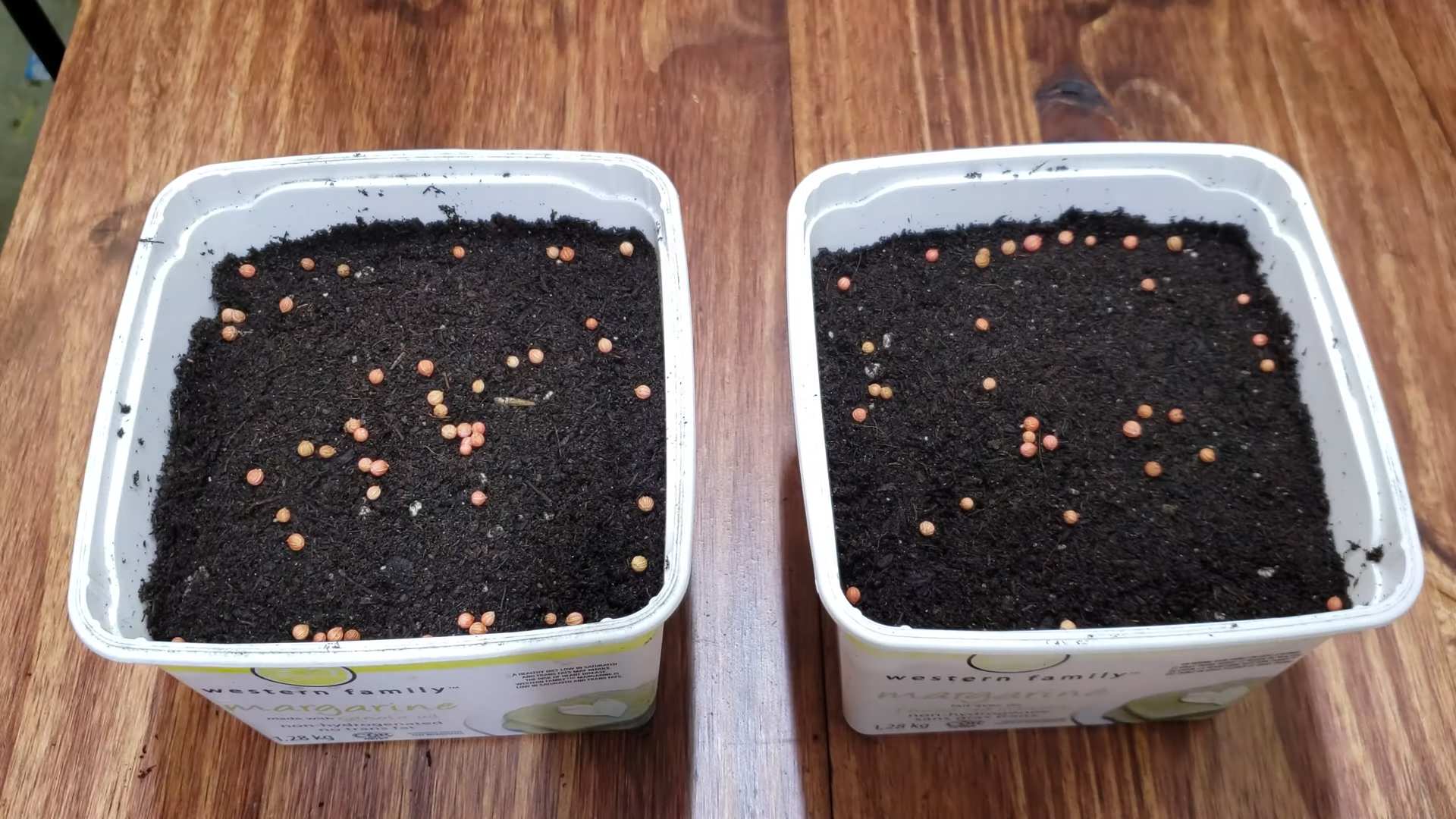
Conclusion
So, there you have it! Growing cilantro indoors is not only achievable, but it’s also a rewarding experience that brings fresh, vibrant flavor right to your fingertips. Forget those sad, wilted bunches from the grocery store – imagine the satisfaction of snipping off exactly the amount of fresh cilantro you need, whenever you need it. This DIY trick is a must-try for anyone who loves to cook with this versatile herb, especially if you live in an area with a short growing season or simply want to enjoy fresh herbs year-round.
Why is this method a game-changer? Because it puts you in control. You control the light, the water, and the soil, creating the perfect environment for your cilantro to thrive. No more battling unpredictable weather or relying on the quality of store-bought herbs. Plus, it’s incredibly cost-effective in the long run. Think of all the money you’ll save by not having to constantly repurchase cilantro that goes bad before you can use it all!
But the benefits don’t stop there. Growing your own cilantro indoors is also a sustainable choice. You’re reducing your carbon footprint by eliminating the need for transportation and packaging associated with store-bought herbs. You’re also minimizing waste by only harvesting what you need.
Ready to take your indoor cilantro garden to the next level? Consider experimenting with different varieties of cilantro. Some varieties are known for their slower bolting (going to seed) tendencies, which means you’ll enjoy a longer harvest. You can also try companion planting. Basil, for example, is said to deter pests and improve the flavor of cilantro.
Another variation to consider is hydroponics. While soil-based growing is perfectly effective, hydroponics offers a soilless alternative that can be even more efficient in terms of water usage and nutrient delivery. It might require a bit more initial investment, but the results can be impressive.
Don’t be afraid to get creative with your containers, too! While a standard pot works just fine, you can also repurpose old jars, cans, or even create a vertical garden for a visually stunning and space-saving display. The possibilities are endless!
We wholeheartedly encourage you to give this DIY trick a try. It’s easier than you might think, and the rewards are well worth the effort. Once you’ve experienced the joy of harvesting your own fresh cilantro, you’ll never go back to store-bought again.
And most importantly, we want to hear about your experience! Share your tips, tricks, and photos with us in the comments below. Let us know what worked for you, what challenges you faced, and any variations you tried. Together, we can create a community of indoor cilantro growers and help each other achieve herb-growing success. So, grab your seeds, get your hands dirty, and start growing cilantro indoors today! You won’t regret it.
Frequently Asked Questions (FAQ)
What kind of soil is best for growing cilantro indoors?
A well-draining potting mix is crucial for successful indoor cilantro cultivation. Avoid using garden soil, as it tends to be too heavy and can compact, leading to poor drainage and root rot. Look for a potting mix specifically formulated for herbs or vegetables. These mixes typically contain a blend of peat moss, perlite, and vermiculite, which provide excellent drainage and aeration. You can also amend a standard potting mix with perlite or vermiculite to improve its drainage capabilities. The ideal pH level for cilantro is between 6.0 and 7.5, which is slightly acidic to neutral.
How much sunlight does indoor cilantro need?
Cilantro thrives in bright, indirect sunlight. Ideally, aim for at least six hours of sunlight per day. A south-facing window is often the best option, but an east- or west-facing window can also work. If you don’t have access to enough natural light, you can supplement with artificial lighting. Grow lights, such as fluorescent or LED lights, are an excellent way to ensure your cilantro receives the light it needs, especially during the winter months. Position the grow light a few inches above the plants and keep it on for 12-14 hours per day. Insufficient light can lead to leggy, weak growth and a reduced harvest.
How often should I water my indoor cilantro?
Watering frequency depends on several factors, including
So, there you have it! Growing cilantro indoors is not only achievable, but it’s also a rewarding experience that brings fresh, vibrant flavor right to your fingertips. Forget those sad, wilted bunches from the grocery store – imagine the satisfaction of snipping off exactly the amount of fresh cilantro you need, whenever you need it. This DIY trick is a must-try for anyone who loves to cook with this versatile herb, especially if you live in an area with a short growing season or simply want to enjoy fresh herbs year-round.
Why is this method a game-changer? Because it puts you in control. You control the light, the water, and the soil, creating the perfect environment for your cilantro to thrive. No more battling unpredictable weather or relying on the quality of store-bought herbs. Plus, it’s incredibly cost-effective in the long run. Think of all the money you’ll save by not having to constantly repurchase cilantro that goes bad before you can use it all!
But the benefits don’t stop there. Growing your own cilantro indoors is also a sustainable choice. You’re reducing your carbon footprint by eliminating the need for transportation and packaging associated with store-bought herbs. You’re also minimizing waste by only harvesting what you need.
Ready to take your indoor cilantro garden to the next level? Consider experimenting with different varieties of cilantro. Some varieties are known for their slower bolting (going to seed) tendencies, which means you’ll enjoy a longer harvest. You can also try companion planting. Basil, for example, is said to deter pests and improve the flavor of cilantro.
Another variation to consider is hydroponics. While soil-based growing is perfectly effective, hydroponics offers a soilless alternative that can be even more efficient in terms of water usage and nutrient delivery. It might require a bit more initial investment, but the results can be impressive.
Don’t be afraid to get creative with your containers, too! While a standard pot works just fine, you can also repurpose old jars, cans, or even create a vertical garden for a visually stunning and space-saving display. The possibilities are endless!
We wholeheartedly encourage you to give this DIY trick a try. It’s easier than you might think, and the rewards are well worth the effort. Once you’ve experienced the joy of harvesting your own fresh cilantro, you’ll never go back to store-bought again.
And most importantly, we want to hear about your experience! Share your tips, tricks, and photos with us in the comments below. Let us know what worked for you, what challenges you faced, and any variations you tried. Together, we can create a community of indoor cilantro growers and help each other achieve herb-growing success. So, grab your seeds, get your hands dirty, and start growing cilantro indoors today! You won’t regret it.
Frequently Asked Questions (FAQ)
What kind of soil is best for growing cilantro indoors?
A well-draining potting mix is crucial for successful indoor cilantro cultivation. Avoid using garden soil, as it tends to be too heavy and can compact, leading to poor drainage and root rot. Look for a potting mix specifically formulated for herbs or vegetables. These mixes typically contain a blend of peat moss, perlite, and vermiculite, which provide excellent drainage and aeration. You can also amend a standard potting mix with perlite or vermiculite to improve its drainage capabilities. The ideal pH level for cilantro is between 6.0 and 7.5, which is slightly acidic to neutral.
How much sunlight does indoor cilantro need?
Cilantro thrives in bright, indirect sunlight. Ideally, aim for at least six hours of sunlight per day. A south-facing window is often the best option, but an east- or west-facing window can also work. If you don’t have access to enough natural light, you can supplement with artificial lighting. Grow lights, such as fluorescent or LED lights, are an excellent way to ensure your cilantro receives the light it needs, especially during the winter months. Position the grow light a few inches above the plants and keep it on for 12-14 hours per day. Insufficient light can lead to leggy, weak growth and a reduced harvest.
How often should I water my indoor cilantro?
Watering frequency depends on several factors, including the size of the pot, the type of potting mix, and the ambient temperature. As a general rule, water your cilantro when the top inch of soil feels dry to the touch. Avoid overwatering, as this can lead to root rot. Ensure that the pot has drainage holes to allow excess water to escape. When watering, water thoroughly until water drains out of the bottom of the pot. During the warmer months, you may need to water more frequently than during the cooler months. Check the soil moisture regularly to determine the appropriate watering schedule.
Why is my cilantro bolting (going to seed)?
Bolting is a common problem with cilantro, especially in warm weather. When cilantro bolts, it stops producing leaves and focuses on producing flowers and seeds. Several factors can contribute to bolting, including high temperatures, insufficient water, and stress. To prevent bolting, try to keep the temperature around your cilantro plants cool, ideally between 60-75°F (15-24°C). Water regularly to keep the soil consistently moist, but not waterlogged. Harvest the leaves frequently to encourage new growth and delay bolting. If your cilantro does bolt, you can still harvest the seeds, which are known as coriander.
How do I harvest cilantro leaves?
Harvest cilantro leaves by snipping them off with scissors or pinching them off with your fingers. Start harvesting when the plants are about 6-8 inches tall. Harvest the outer leaves first, leaving the inner leaves to continue growing. Avoid harvesting more than one-third of the plant at a time, as this can stress the plant and slow down growth. Regular harvesting encourages new growth and can help to delay bolting. Harvest in the morning, when the leaves are at their most flavorful.
Can I grow cilantro from seed indoors?
Yes, growing cilantro from seed indoors is a relatively easy process. Start by soaking the cilantro seeds in water for 24 hours to improve germination rates. Fill a pot with well-draining potting mix and sow the seeds about ¼ inch deep. Water gently and keep the soil consistently moist. Germination typically occurs within 7-10 days. Once the seedlings emerge, thin them out to allow for adequate spacing. Provide plenty of light and water regularly.
What are some common pests and diseases that affect indoor cilantro?
While indoor cilantro is generally less susceptible to pests and diseases than outdoor cilantro, it can still be affected by certain problems. Common pests include aphids, spider mites, and whiteflies. These pests can be controlled with insecticidal soap or neem oil. Overwatering can lead to fungal diseases such as root rot and powdery mildew. Ensure that the pot has drainage holes and avoid overwatering. Provide good air circulation to prevent fungal diseases. Regularly inspect your plants for signs of pests or diseases and take action promptly to prevent them from spreading.
How long will my indoor cilantro plant last?
The lifespan of an indoor cilantro plant depends on several factors, including the variety, growing conditions, and harvesting practices. With proper care, cilantro can last for several weeks or even months. However, cilantro is an annual herb, which means it completes its life cycle in one growing season. Eventually, it will bolt and stop producing leaves. To extend the lifespan of your cilantro plant, provide optimal growing conditions, harvest regularly, and prevent bolting. You can also succession plant by sowing new seeds every few weeks to ensure a continuous supply of fresh cilantro.

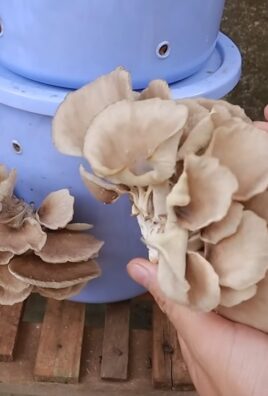
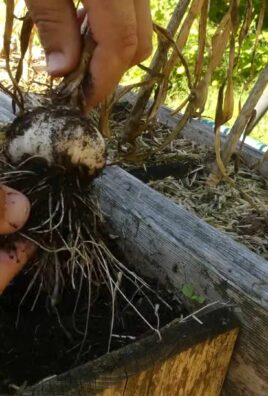
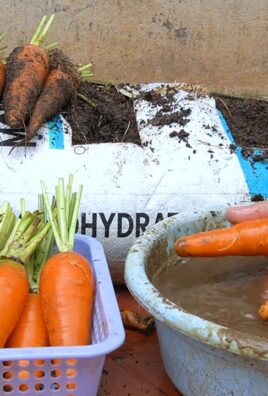
Leave a Comment